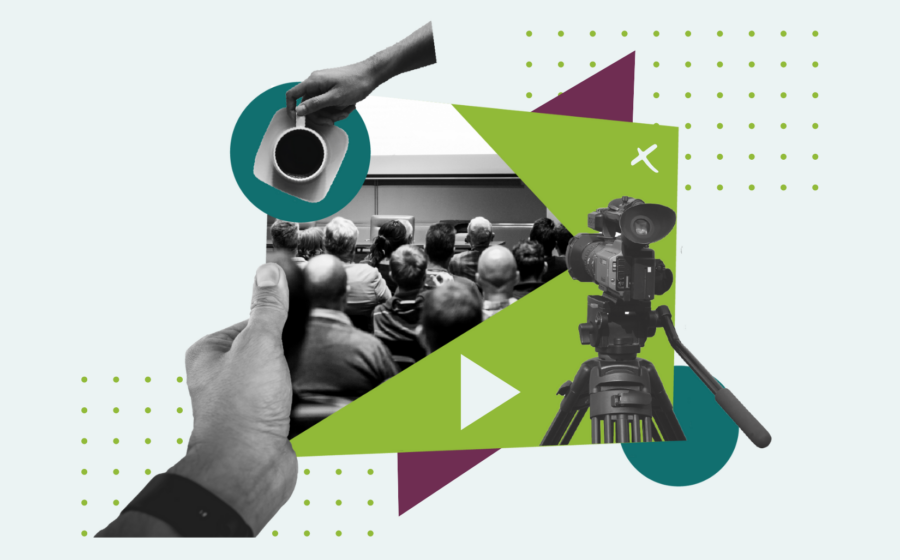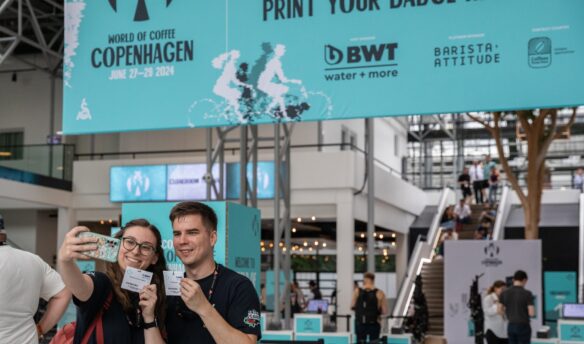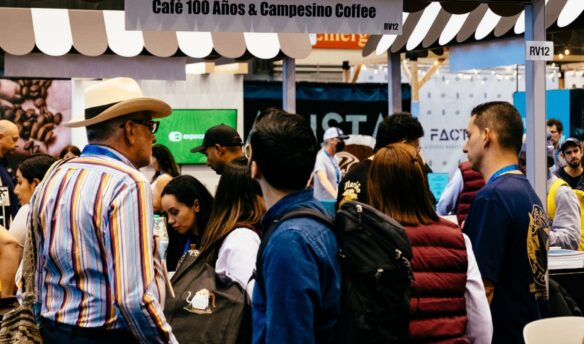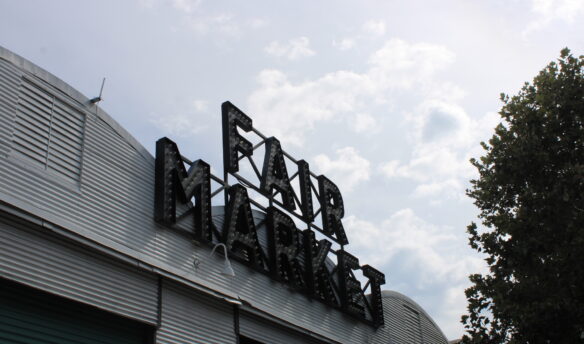Not all events need to be entirely virtual to be accessible—a high-quality hybrid event can meet the needs of various attendees. Hybrid events include a combination of in-person activities and complementary virtual experiences. They’re a great tool not just for navigating the current realities of COVID-19 but a way to bring together as many people as possible, regardless of restrictions.
I searched my online network for inspiration on high-quality hybrid events my peers had attended, but the response was lackluster. Many said they had never been to a well-organized hybrid event, and some said they had never been to a hybrid event at all. A few said that the opportunity for casual social interaction was an irreplaceable factor in in-person events. Some noted that sensory experiences (like tastings, shared meals, and happy hours) curated for in-person attendees were absent from the virtual side of hybrid events.
While it may be impossible to put together an event that’s perfect for all, there are many ways to create a successful hybrid event that offers an enriching experience to all attendees.
Bringing Goals to Life
When planning a hybrid event, the first thing to do is to think about your goals.
What experiences are you trying to curate for attendees? Is it solely content-based, like lectures and discussions, or are there sensory elements, like tastings and food pairings? Will there be social elements, like optional mingling between sessions, group meals, or happy hours?
The answers to these questions tell you what experience you’re trying to curate. The next step is thinking about crafting this experience for two distinct audiences: one in-person and one remote.
According to virtual and hybrid events platform Communiqué (which, notably, was founded in 2001—proof that digital and hybrid events long predate COVID-19), “what makes hybrid events unique is the fact that they are built around delivering a unique, yet consistent, experience to each attendee type. This is not the same as sharing videos on demand after the event or prioritizing your live audience over your remote audience.”
Arielle Rebekah Gordon, the founder of Trans and Caffeinated, noticed a disparity in the virtual experience of the hybrid events they’ve attended. “The virtual component has often felt like an afterthought,” they say. “There also aren’t as many opportunities for networking, which is one of the most important and beneficial functions of industry events.”
So acknowledging that there’s no way to recreate the in-person experience for virtual attendees or the virtual experience for in-person attendees, what are the two experiences you plan to create?
Two Audiences, Two Experiences
When thinking about event goals, it’s vital to consider how you can create parallel experiences for in-person and virtual attendees. Below are some examples of how to think about curating a hybrid experience.
There are several ways to approach hybridizing content-based elements:
- Suppose a lecturer presents to a large in-person audience. In that case, organizers can use an interactive live-streaming platform to broadcast the lecture while designating a specific in-person attendee to take remote attendees’ questions, comments, and feedback.
- Beyond questions and comments, interactive elements can include polls that audience members (both in-person and virtual) can complete on their phones.
- Lectures can also be given virtually and broadcast to both the live in-person audience and the virtual attendees.
- If you’re trying to create an interactive discussion experience for a class or book club, it can be helpful to center the virtual attendees since it’s easier for them to get boxed out of rapid in-person discussions. That can look like the teacher leading via computer, with the two audiences (a roomful of people and a network of virtual attendees) getting equal access.
It’s a little trickier, but equally possible, to integrate virtual attendees into sensory elements:
- If your event includes a tasting, you can send out kits to virtual attendees in advance with preparation instructions.
- If your event includes a specific meal experience, can a similar remote experience be created through a shared takeout option that virtual attendees can participate in from home?
The most difficult in-person component to recreate is the social element of events. Here are some ways to approach this:
- In-person events often include optional mingling between sessions. This can’t necessarily be recreated, but it is possible to create open virtual social rooms where virtual attendees can connect and discuss their experiences and thoughts between sessions.
- As in the sensory element of a shared meal, can you include a shared virtual space for remote attendees to enjoy a meal together? Not everyone wants to eat on camera (myself included), but many miss the element of sharing meals at events and might want to engage.
- The same goes for happy hours: is it possible to host an in-person and virtual happy hour simultaneously?
These examples are just starting points to consider your goals and audiences.
Additionally, while planning, you can send out surveys to virtual attendees before finalizing last-stage event details like meal and drink plans to see what they might or might not be interested in. Your virtual attendees may come up with ideas for meaningful ways they’d like to engage.
Accessibility Beyond Presence
Gordon noted that simply hosting a hybrid event isn’t enough. Aside from being able to attend events virtually (a big accessibility win in itself), many other accessibility basics were lacking.
“Ironically (since the main point of maintaining a virtual component is to increase access), most of the hybrid events I’ve attended have missed the mark regarding accessibility,” they say.
While the below list may seem exhausting (if not exhaustive), remember that every action taken to promote accessibility is a decisive step toward improving the general standard. As the adage says, don’t let perfect be the enemy of good.
A few ideas Gordon shared:
- Hire ASL and Black ASL interpreters.
- Enable captioning for all programming.
- Encourage speakers to speak slowly.
- Include visual descriptions for those who can’t see (e.g., what presenters are wearing, any text on the screen, and any pictures shown).
- Allow for plenty of breaks.
- Allow access to small breakout rooms. Gordon describes further: “some focused on folks who just need a break from programming, others focused on specific networking needs (e.g., queer/trans barista connect, non-man roaster connects, BIPOC coffee person connects, disabled/neurodivergent coffee person connects).”
“Also,” they recommend, “as events move towards hybrid models, one or multiple event planners need to be committed to attending the virtual component instead of the in-person one—that way, someone who had a hand in shaping the event actually has a stake in the virtual component being good. Heavy preference that this person has at least some knowledge of disability justice.”
Make it Your Own
Key to crafting a premium hybrid event experience is the care and thought to what those who attend virtually may be missing. While we may not be able to create a one-for-one match between the experiences of those who can attend events in person, we can demonstrate community care for those who cannot by including them in thoughtful and intentional hybrid events.
In this way, we make sure that all who have a valuable contribution to our industry are allowed to make that contribution—a shared action that benefits all of us.
To learn more about how you can host a virtual or hybrid event, check out these profiles on Go Fund Bean, Leaderboard Coffee, and Glitter Cat.















